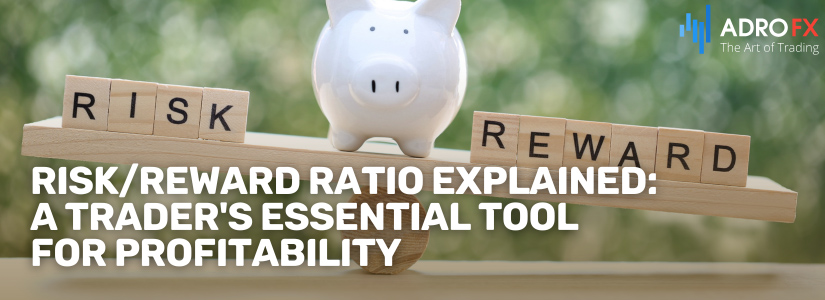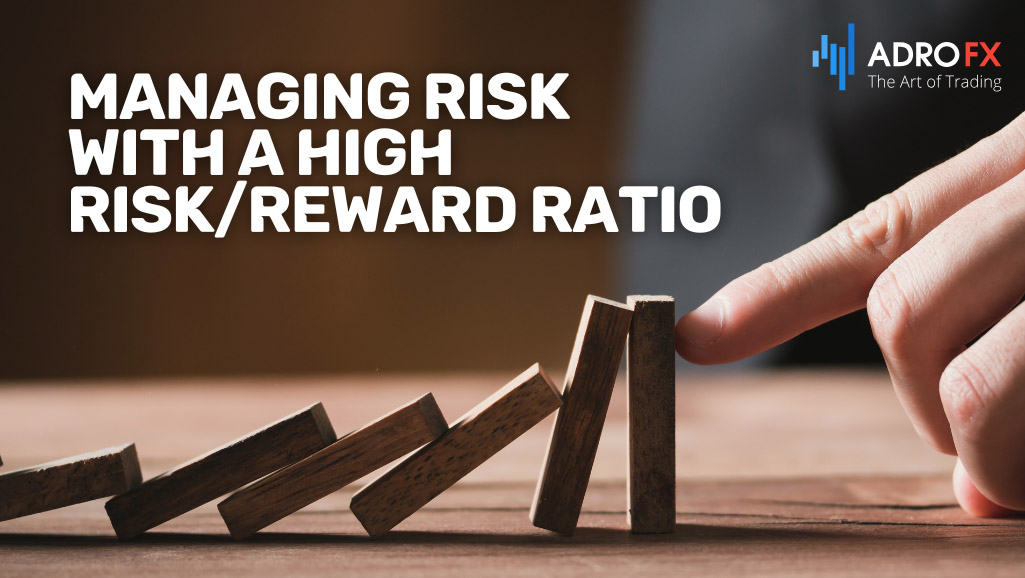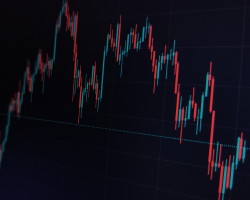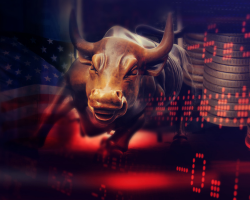Risk/Reward Ratio Explained: A Trader's Essential Tool for Profitability

In the intricate and often unpredictable world of trading, success doesn’t come solely from picking the right stocks or predicting market movements. Instead, it comes from a trader’s ability to manage risk effectively. Enter the risk/reward ratio - one of the most essential tools in a trader's toolkit. This powerful concept helps traders navigate the market with discipline and clarity, ensuring that every trade has the potential for profit while keeping losses manageable.
Whether you're a seasoned trader or just starting, understanding how to calculate and apply the risk/reward ratio can be a game-changer. It's not just about winning more trades but ensuring that when you win, the rewards outweigh the risks. Let's break down the significance of this ratio and how it can shape your trading strategy for long-term success.
What Is the Risk/Reward Ratio?
The risk/reward ratio is a simple mathematical formula that compares the potential profit of a trade to the potential loss. In other words, it tells you how much you stand to gain for every dollar you risk. For example, if you're risking $100 to potentially gain $300, your risk/reward ratio is 1:3, meaning for every $1 of risk, you could make $3 in profit.
The key idea behind this concept is to help traders make informed decisions. Instead of focusing on the excitement of potential gains, the ratio forces you to consider the downside first. By doing so, traders avoid entering trades that might seem attractive but carry disproportionate risks. It's a fundamental concept for anyone looking to stay in the trading game for the long run.

Why It's Essential for Every Trader
Every trade you make involves an inherent risk, but the difference between profitable traders and those who struggle often boils down to risk management. The risk/reward ratio provides a structured way to evaluate trades, helping you stay disciplined and protect your capital. It’s a common pitfall to chase high returns without fully appreciating the risk involved, but a trader who consistently uses this ratio can avoid costly mistakes.
When combined with other tools like Stop Loss orders and position sizing, the risk/reward ratio becomes part of a broader strategy that focuses not just on profit potential, but on controlling losses as well. For any trader looking to build long-term success, learning to calculate and apply this ratio is vital.
Why the Risk/Reward Ratio Matters
Many novice traders fall into the trap of thinking that successful trading is all about making more winning trades than losing ones. However, seasoned traders know that success is less about how often you win and more about how you manage risk when you lose. This is where the risk/reward ratio shines - it ensures that even if you lose more trades than you win, the trades you do win yield enough profit to cover your losses and still come out ahead.
For instance, imagine you win only 40% of your trades. If your risk/reward ratio is 1:3, this means that your wins will cover not only your losses but also give you a profit. The beauty of this strategy is that you don’t need to win every trade to be successful - you just need to manage your risk correctly.
Benefits of Using a Risk/Reward Ratio for Disciplined Trading
One of the main advantages of using the risk/reward ratio is that it forces you to think rationally and systematically, reducing the emotional aspect of trading. Emotion-driven decisions, such as holding onto losing positions in the hope that they will reverse, often lead to poor outcomes. By sticking to a favorable risk/reward ratio, you approach each trade with a clear plan and limit the potential for reckless behavior.
Additionally, using the risk/reward ratio helps identify high-quality trades. You won’t enter every trade simply because you think it could be profitable. Instead, you’ll have a set criterion for entering trades where the reward outweighs the risk. Over time, this disciplined approach leads to more consistent trading results and a clearer path to success.
How to Calculate Risk/Reward Ratio
Calculating the risk/reward ratio is a straightforward process, but it’s one that can make all the difference in your trading outcomes. Here’s how to do it in three simple steps:
Step 1: Define Your Risk
In trading, risk refers to the amount of capital you're willing to lose if a trade goes against you. This is calculated based on the distance from your entry price (the price at which you open a position) to your Stop Loss price (the price at which you will exit the trade to prevent further loss).
For example, if you're trading a stock that you buy at $100, and you place a Stop Loss at $95, your risk is $5 per share. This is the maximum amount you’re prepared to lose on the trade.
Step 2: Define Your Reward
The reward is the potential profit you aim to make if the trade moves in your favor. This is calculated by measuring the distance between your entry price and your Take Profit price (the price at which you will exit the trade to lock in profits).
Continuing with the same example, if you plan to sell your stock at $115, your potential reward is $15 per share.
Step 3: Apply the Risk/Reward Formula
Now, let’s bring it all together. The formula for calculating the risk/reward ratio is:
Risk/Reward Ratio = Potential Reward / Potential Risk
Using the numbers from our example:
- Risk: $5
- Reward: $15
Risk/Reward Ratio = 15/5 = 3
This gives you a 1:3 risk/reward ratio, meaning for every dollar you risk, you could potentially earn three. This is considered a favorable ratio, as the potential reward significantly outweighs the risk.
The ideal risk/reward ratio will vary depending on your trading strategy and market conditions, but many traders aim for a minimum of 1:2 or 1:3. This means you should only take trades where the potential profit is at least double or triple the potential loss. Some traders, especially those who engage in day trading or scalping, may use lower ratios like 1:1.5, but this requires a higher win rate to remain profitable.
It’s also important to adjust your ratio based on market volatility and your risk tolerance. In highly volatile markets, you may need to widen your Stop Loss and Take Profit levels, which can affect your risk/reward ratio. The key is to remain flexible while always keeping an eye on maintaining a favorable balance between risk and reward.
The risk/reward ratio is more than just a formula - it’s a mindset that can protect your capital, guide your decisions, and improve your long-term success as a trader. By learning to calculate and apply this ratio consistently, you ensure that every trade has a strategic basis, helping you manage risk effectively and capitalize on rewards when opportunities arise.
Remember, successful trading isn’t just about winning more than you lose - it’s about ensuring that when you win, the profits are worth the risks. Keep this in mind, and your trading journey will become more structured, disciplined, and ultimately, more profitable.
Real-Life Example of Risk/Reward Calculation
Let’s walk through a real-life example to see how the risk/reward ratio can be applied in a trading scenario, using Apple’s stock (AAPL) from the chart below.

Imagine you’re considering entering a trade on AAPL when the price is at $225.89 (as of the moment of writing). Based on the technical analysis, you set a Take Profit level at $240 and a Stop Loss at $220. Now, let’s break down the steps to calculate the risk/reward ratio for this trade.
Define the Risk
The risk is the distance between your entry price and the Stop Loss level. In this case, you’re willing to risk a decline in price down to $220. So, the risk can be calculated as:
Risk=Entry Price−Stop Loss=225.89−220=5.89
This means you’re risking $5.89 per share.
Define the Reward
Next, we look at the reward, which is the distance between your entry price and the Take Profit level. You’ve set a target at $240, so the potential reward is:
Reward=Take Profit−Entry Price=240−225.89=14.11
This means your potential reward is $14.11 per share.
Calculate the Risk/Reward Ratio
Now that we have both the risk and the reward, we can calculate the risk/reward ratio using the formula:
Risk/Reward Ratio = Potential Reward / Potential Risk = 14.11/5.89≈2.39
In this example, the risk/reward ratio is 2.39. This means that for every $1 you risk, you stand to gain $2.33, making this trade favorable from a risk/reward perspective.
Interpreting the Result
With a risk/reward ratio of 2.39, this trade meets the criteria for many traders who aim for a ratio of 1:2 or higher. The higher the ratio, the more room you have to withstand a few losing trades while still being profitable overall.
By understanding and applying this simple calculation, you can make more informed decisions, ensuring that the potential reward justifies the risk you're taking on. In this case, risking $5.89 for the opportunity to make $14.11 per share is a solid risk/reward setup that can help maintain disciplined trading over time.
Ideal Risk/Reward Ratio: What Works Best?
The risk/reward ratio is more than just a number - it’s a strategic tool that helps traders weigh potential profits against possible losses. But what’s the ideal ratio? Is there a one-size-fits-all answer? Not exactly. However, understanding common ratios like 1:2 or 1:3 can offer insight into what works best for different trading strategies.
A 1:2 ratio, for example, means you’re risking $1 for every $2 you stand to gain. A 1:3 ratio takes it further, risking $1 for every $3 in potential reward. The higher the ratio, the better the trade-off between risk and reward, provided your win rate can support it. But, what ratio is "ideal" often depends on your trading style, market, and tolerance for risk.
For short-term traders, a 1:2 ratio may offer a comfortable balance, allowing for quick exits without sacrificing too much potential profit. On the other hand, swing traders who hold positions longer might aim for a 1:3 or higher ratio to justify the extended exposure to market volatility. It’s also about trading frequency - higher ratios allow you to be wrong more often but still remain profitable in the long run.
Determining your ideal risk/reward ratio is all about fitting it to your personal trading goals and strategy. Some traders prefer smaller, more frequent wins, while others are willing to wait for bigger payouts, risking more in the process. Either way, the key is finding a ratio that works for you, ensuring that your potential rewards consistently outweigh your risks.

Managing Risk with a High Risk/Reward Ratio
A high risk/reward ratio can seem like the golden ticket to success, but without effective risk management, it can also lead to unnecessary losses. That’s why learning to manage risk properly is critical to long-term profitability. With the right techniques, you can avoid the trap of over-risking while taking advantage of favorable risk/reward setups.
The first essential tool is the Stop Loss order. This isn’t just about limiting losses; it’s about pre-planning your exit point before you even enter a trade. A common mistake traders make is setting their Stop Loss too tight, which can result in being prematurely stopped out. On the flip side, setting it too wide can increase your risk to an unacceptable level, throwing your ratio off balance. The key is to place it at a logical level, such as just below a support level for a long trade or above a resistance level for a short trade.
Another critical factor is knowing when to walk away from a trade. If the setup doesn’t offer a favorable risk/reward ratio, no matter how tempting it looks, it’s best to skip the trade. Discipline is what separates successful traders from those who fail in the long run. Chasing trades with poor ratios increases the chance of a big loss wiping out multiple small wins.
Additionally, using position sizing effectively is an important part of managing risk with a high risk/reward ratio. By adjusting the amount of capital allocated to each trade, you can keep your risk levels consistent across different trades, even if the potential reward varies.
Finally, having a trading plan in place is non-negotiable. When you have a structured approach to each trade - knowing where your entry, exit, Stop Loss, and target levels are - you maintain control over both your risk and reward. This disciplined method will help you better manage trades with higher risk/reward ratios, giving you the best chance at long-term success.
Final Thoughts on Using Risk/Reward Ratios
Incorporating the risk/reward ratio into your trading strategy is more than just a helpful tool - it’s a critical step in improving your long-term trading success. By consistently assessing both the potential risk and the possible reward before entering any trade, you can make more informed decisions and avoid impulsive trading behaviors that could lead to unnecessary losses. This disciplined approach allows traders to maintain control over their investments, even in the face of market uncertainty.
The beauty of the risk/reward ratio is its simplicity. Yet, despite its straightforward nature, it has the power to dramatically shift your trading outcomes. When you focus on balancing risk and reward, you protect yourself from over-risking while maximizing your opportunities for profit. Every time you sit down to place a trade, ask yourself: "Does this trade meet my risk/reward criteria?" If the answer is no, it may be wise to step back.
Risk management is key to longevity in trading, and the risk/reward ratio serves as your guidepost. The more consistently you apply it, the more disciplined and effective you will become, ultimately growing your trading confidence and profitability.
Ready to Put Your Knowledge to Work?
Now that you’ve mastered the art of calculating and using the risk/reward ratio, it's time to start applying these principles in real trading scenarios. At AdroFx, we offer advanced trading tools and insights to help you manage your trades effectively. Open an account today and start making more informed, confident trades using the risk/reward ratio to your advantage. Your trading journey to success begins with the right tools and mindset - join AdroFx and trade smarter!
About AdroFx
Established in 2018, AdroFx is known for its high technology and its ability to deliver high-quality brokerage services in more than 200 countries around the world. AdroFx makes every effort to keep its customers satisfied and to meet all the trading needs of any trader. With the five types of trading accounts, we have all it takes to fit any traders` needs and styles. The company provides access to 115+ trading instruments, including currencies, metals, stocks, and cryptocurrencies, which make it possible to make the most out of trading on the financial markets. Considering all the above, AdroFx is the perfect variant for anyone who doesn't settle for less than the best.










